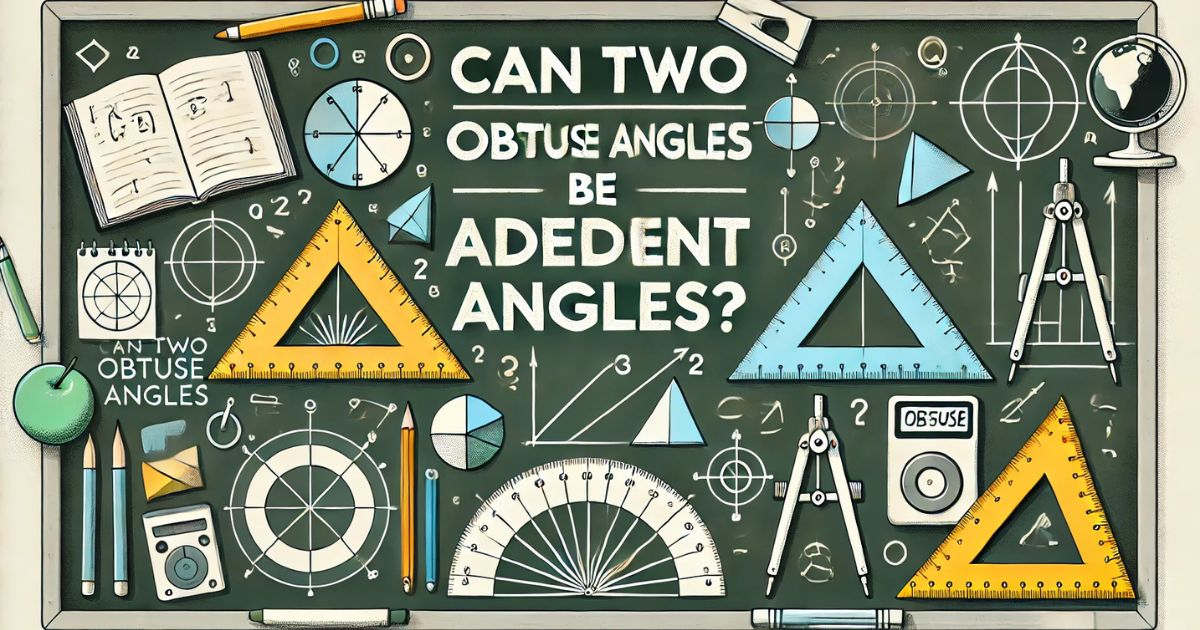
The short and simple answer is no, two obtuse angles cannot be adjacent angles if they are on the same straight line. However, if they are simply next to each other without forming a straight angle, they can be adjacent. Let’s break this down in easy terms so it’s clear.
What Are Adjacent Angles?
Adjacent angles are two angles that:
- Share a common vertex
- Share a common side (arm)
- Do not overlap
In some cases, adjacent angles are on a straight line, and their measures add up to 180°. These are called linear pairs.
What Is an Obtuse Angle?
An obtuse angle is any angle that measures more than 90° but less than 180°.
- For example: 100°, 120°, or 135° are obtuse angles.
Can Two Obtuse Angles Be Adjacent?
On a Straight Line (Linear Pair) – No
If two adjacent angles form a straight line, their measures must add up to 180°.
- An obtuse angle is already more than 90°.
- If you have two obtuse angles, their measures would add up to more than 180°, which is impossible in a straight line.
For example:
- 100° + 100° = 200°, which is greater than 180°.
- This cannot happen if they are supposed to form a linear pair.
Without Forming a Straight Line – Yes
If you are simply placing two obtuse angles next to each other without requiring them to add up to 180°, they can be adjacent.
- They share a common vertex and common side, but don’t necessarily lie on a straight line.
- However, this is rare in geometric diagrams, because overlapping or space issues usually prevent two obtuse angles from sitting next to each other comfortably.
Visual Understanding
- Think of two obtuse angles, each wider than 90°.
- If you try to place them side by side sharing a common arm, they tend to overlap because they both open wide.
- That’s why in most geometric situations, two obtuse angles are not adjacent, except in specific non-linear scenarios.
Conclusion
- Two obtuse angles cannot be adjacent angles forming a linear pair, because their sum would be more than 180°, which is impossible.
- They can be adjacent in a general sense if they share a common side and vertex, but in practice, it’s uncommon due to the size and shape of obtuse angles.
So, while theoretically possible in non-linear arrangements, in practical geometry, it’s not typical for two obtuse angles to be adjacent.
Also Check:
• Can Two Angles Be Supplementary if Both of Them Are Acute or Obtuse? An In-Depth Exploration
• Can Two Acute Angles Form a Linear Pair?
• Can Two Adjacent Angles Be Complementary? Understanding and Illustrating the Concept
• Can a Triangle Have Two Right Angles? Exploring the Limits of Triangle Geometry



